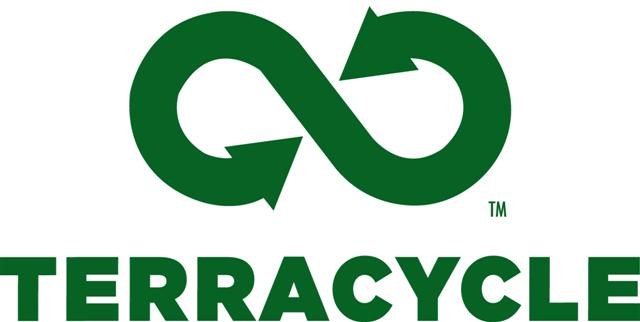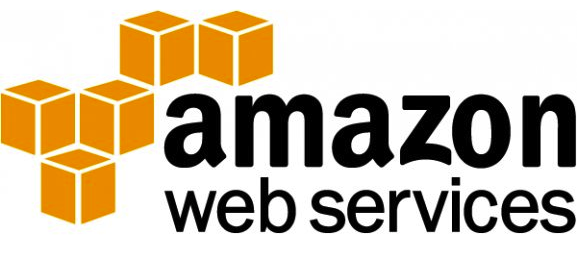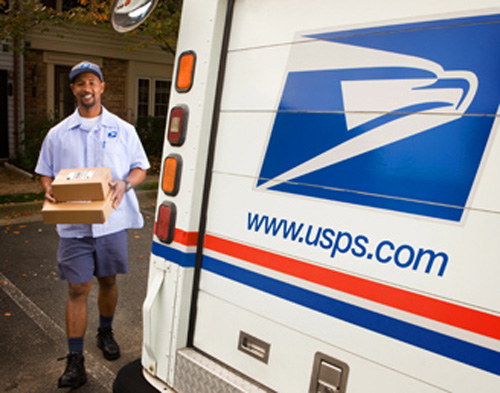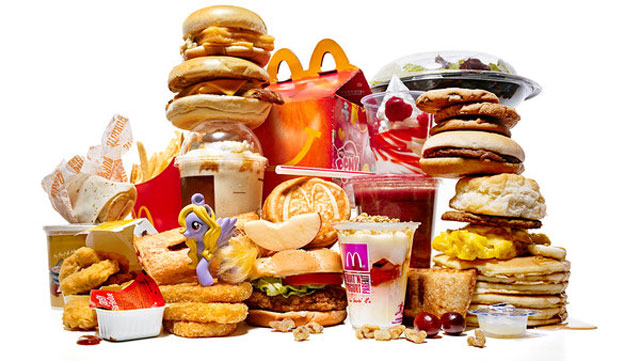November 18th, 2013 § § permalink

I came across a very interesting post on Terracycle by Yifei. Terracycle Inc. is a social enterprise that produces organic fertilizer out of liquified worm excretes packaged in soda bottles. These worms were fed waste that people threw into the recycling bin, thus making the whole business a win-win situation for both the people and the environment. The founder of Terracycle is a Princeton graduate, who came across this brilliant idea on a trip to Montreal with his friends when he was 19. Since then, Terracycle has built its brand to be one of the most internationally renowned upcycling and recycling companies. They currently work with more than one hundred brands spread in 23 countries all over the world.
Just recently, TerraCycle even began a partnership with the City of Vancouver to launch the first ever recycling program for cigarette butts. The Cigarette Waste Brigade pilot program has set up 110 new cigarette recycling receptacles in the Downtown area, with stickers reading “Recycles Your Butts Here.” This program will not only help to reduce waste on Vancouver Downtown streets but also create more job opportunities as staff is needed to maintain these receptacles.
TerraCycle is truly the perfect embodiment of the spirit of social entrepreneurship, working hard to create a win-win-win situation for the business owner, the people, as well as the environment.
Sources:
“City and TerraCycle Launch Cigarette Butt Collection and Recycling Program.” City of Vancouver, 12 Nov. 2013. Web. 18 Nov. 2013.
“TerraCycle.” TerraCycle. N.p., n.d. Web. 18 Nov. 2013.
November 17th, 2013 § § permalink

Ever since the Chinese media reported the presence of an excessive level of antibiotics in the poultry suppliers partnered with KFC in mid-December of 2012, KFC sales in China has been going downhill. With the lowered sales, and increasing food chains offering Western fast food like McDonald’s, Burger King, and Pizza Hut, KFC chose to add more Chinese-style fast food to its menu, as mentioned in Kathy’s post. I agree with what Kathy wrote, that by adding Chinese products to its menu, its destabilizing its brand. Many of its customers are there for the Western experience, and KFC would be losing their USP if they start changing their menu to a Chinese one.
Just recently, however, KFC may be making a comeback with its October sales. As well, according to a brand-equity firm Millward Brown, KFC is ranked as the number one consumer brand in China, with McDonald in sixth place. This shows that KFC’s investment of almost one quarter of its total number of branches to be placed in China has been of some avail. It also looks like the negative blow on its brand image caused by the Chinese media last December as well as the bird flu epidemic in China earlier this year, is finally beginning to cool off. This might just mean that KFC’s miserable year in China is finally coming to an end.
Just on a fun side note, going back to the topic of incorporating Chinese culture into its brand image, I happened to come across this funny KFC commercial that was aired in China. Watching the commercial, one can see that KFC is really trying hard to put Chinese culture and western fried chicken together. However, the big irony of this commercial is that even though KFC has the main Chinese background music and costumes right, the ‘master’ in the video who was eating fried chicken, is a taoist monk and they are supposed to be vegetarian…(more the reason why KFC should not stray too far away from its western image.)
Sources:
Cooper, Ted. “KFC’s Awful Year in China Is Finally Coming to an End.”DailyFinance.com. The Motley Fool, 17 Nov. 2013. Web. 18 Nov. 2013.
November 17th, 2013 § § permalink

Sweden’s IKEA, who was one of the first to sweep the world off its feet with its build-it-yourself furniture, is now aiming for sustainability. With the goal of complete energy independence by 2020, IKEA is now purchasing wind farms and solar panels around the world. Just last week, IKEA Canada announced its purchase of a wind farm located in southern Alberta, with 46 megawatts and twenty 100 metre tall turbines. IKEA Canada’s sustainability manager, Brendan Shale said, “This will be IKEA’s first wind farm outside of Europe. It’s also the largest investment by a retailer in Canada to date in wind energy.” With this new addition in their current collection of 157 wind turbines in eight countries worldwide, IKEA is almost halfway past their turbine purchasing goal.
Other than renewable power, IKEA is also looking into expanding into a line of green products. With a plan to invest $4.25 billion in its green portfolio until the end of 2015, IKEA will have generated 70% of the energy it consumes. According to IKEA’s chief sustainability officer, Steve Howard, to get that number up to 100% by 2020, the company will need to make another investment similar to the current one.
With so much effort and investment put into this green-energy push, IKEA is striving to improve on their CSR to strengthen their presence as a socially responsible business. “Sustainability has become a must-do for business,” says Howard, “it’s got to be in everybody’s home, it’s got to be in every business, it’s got to be at the heart of every business strategy.” Nevertheless, being green is costly, and it sure is costing IKEA a whole lot. Is investing in renewable energy really the key to success in the future of businesses, or is it just another green trend that will soon become irrelevant in consumers’ hearts?
Sources:
McCarthy, Shawn. “IKEA Brings Build-it-yourself Environmental Plan to Canada.” The Globe and Mail. N.p., 14 Nov. 2013. Web. 17 Nov. 2013.
McDonald, Ian. “Ikea Buys Wind Farm near Pincher Creek.” Global News. N.p., 15 Nov. 2013. Web. 17 Nov. 2013.
White, Ryan. “IKEA Purchases Southern Alberta Wind Farm.” Calgary. CTV Calgary, 14 Nov. 2013. Web. 17 Nov. 2013.
Picture credit:
Andrei, Mihai. “Ikea to Produce 100% Renewable Energy by 2020 – Sets Sustainable Standard.” ZME Science. N.p., 25 Oct. 2012. Web. 17 Nov. 2013.
November 17th, 2013 § § permalink

Rumour has it that snapchat just turned down a $3 billion offer from Facebook, and $4 billion from Google to acquire the company. The consumer internet firm is just going on to its third year, and to receive offers of this size is rare. Facebook only bought Instagram for $2 billion last year in 2012, and Ebay bought Skype for $2.4 billion in 2005. It is very rare to see an offer go to as high as 3, and even 4, billion dollars for a consumer internet firm that has only been in business for a mere two years. Needless to say, it might be hard for Snapchat to see an offer this size again considering how interested companies with enough capital is limited. Then again, if Snapchat turned down an offer this size from Facebook and Google, it must feel confident in its future. Experts are saying that Snapchat is either waiting for a better deal or planning to become the next Facebook.
One important aspect of Snapchat that makes it stand out from the rest of the online social applications is its self-destructing messages. However, with consumers now learning to take screenshots of the photo messages sent to them, this unique selling point, may no longer be so unique. While Snapchat might, at first, seem like a social media platform running on a ‘no digital footprint’ trend with its automatic self-destructing messages, this is no longer the case. So is Snapchat really worth the billions of dollars that these companies are willing to pay for them, if the rumours are true? If the rumours are true, did Snapchat make the right decision in rejecting these billion dollar offers, or are they being a little too optimistic?How far will Snapchat go before it turns into another MySpace or Geocity that everyone’s forgotten about, or will it go far and become the next Facebook?
Sources:
Louis, Tristan. “Snapchat And Other Best and Bungled Billion-Dollars Offers.” Forbes. Forbes Magazine, 16 Nov. 2013. Web. 17 Nov. 2013. <http://www.forbes.com/sites/tristanlouis/2013/11/16/snapchat-and-other-best-and-bungled-billion-dollars-offers/>.
Brown, Joshua. “Snapchat’s Value: ‘A Form Of Delusion'” Business Insider. N.p., 16 Nov. 2013. Web. 17 Nov. 2013. <http://www.businessinsider.com/snapchats-value-a-form-of-delusion-2013-11>.
November 16th, 2013 § § permalink

To most of us, the first thing that comes to mind when the word “Amazon” comes up is Amazon online shopping website that offers packaging and delivery worldwide. What a lot of us do not know about, and is also one of the main backbones that is keeping Amazon going, is Amazon’s cloud computing business known as Amazon Web Services (AWS). AWS is a whole network of cloud services that relieve companies of backing up their information. AWS has clients all over the world big and small, like SAP, Netflix, LinkedIn, Uber, Lamborghini and even the Central Intelligence Agency. These companies launch high performance websites hosted on Amazon’s database centre. The AWS allows its clients to focus on their product development rather than on their technology and size of their computing. This also means that the AWS can ideally be tailored towards any company big or small, resulting in a large market. According to Gardner, Amazon’s cloud network is five times stronger In terms of computing power compared to the next fourteen competitors, thus also giving it a strong market share. With an annual revenue of $2.7 billion and growing at 50%, the future of AWS looks bright and its technology at the moment looks fairly hard to replace.
Sources:
Bloomberg Newsweek. N.d. Running the World: Inside Amazon’s Cloud Business. 14 Nov. 2013. Web. <http://www.businessweek.com/videos/2013-11-14/power-play-how-amazon-web-services-runs-the-world#r=nav-f-video>.
“Amazon Web Services, Cloud Computing: Compute, Storage, Database.” Amazon Web Services, Cloud Computing: Compute, Storage, Database. N.p., n.d. Web. 16 Nov. 2013. <http://aws.amazon.com/>.
November 16th, 2013 § § permalink

To compete against rivals UPS and Fed-ex, the U.S. Postal Service is now offering Sunday deliveries for Amazon as well as an earlier delivery time of 10 AM. This deal is an attempt made by the U.S. Postal Service to further boost their package delivery sales. CFO of U.S. Postal Services, Joseph Corbett, said that there has been an 8% increase in package delivery in 2013, which is the highest its been since the recession. However, this increase still might not be good enough.
The agency’s bottom line has been maintained high by an improving economy, increase in junk mail, and package delivery. However, according to the agency, they lost $5 billion the latest fiscal year, and a $16 billion loss in 2012. Even though, package delivery is expected to increase due to the upcoming holiday season, this is still not enough to save them. According to Corbett, the agency’s total liabilities were $61.5 billion compared to a mere $21.6 billion in assets.
In an effort to cut costs, the agency has retired more than 37,400 employees and raised the price on first-class mail stamps. Is this effort enough to save the agency that is in a $40 billion hole?
Sources:
Liberto, Jennifer. “Can Package Delivery save the Postal Service?” CNNMoney. Cable News Network, 15 Nov. 2013. Web. 16 Nov. 2013.
Lopez, Ricardo. “U.S. Postal Service Reports $5-billion Yearly Loss.” Los Angeles Times. Los Angeles Times, 15 Nov. 2013. Web. 16 Nov. 2013.
November 16th, 2013 § § permalink

For the past few years, McDonald’s have been gradually adding healthier choices in their menu that had once been occupied by burgers, fries, and all kinds of high-calorie fatty foods. McDonald’s started adding salads, apple slices, wraps, and bagels in place of more ‘Big Mac’s on their menu. This change is all part of their ultimate goal in trying to reposition themselves as a ‘healthier’ fast food chain, in order to appeal to a wider customer segment.
To take things a step further against their hamburger chain competitors like Chipotle and Subway, McDonald’s declared that they will now be testing out a ‘build-your-own-burger’ concept. This experiment is going to start in Laguna Niguel, California. Featuring five main burgers, customers will now be given a wider variety of toppings and sauces to choose from. This test started when McDonald’s began struggling to boost sales amid more competition among burger joints as well as a change in the public’s eating habits. Kevin Newell, chief brand and strategy officer for the U.S. McDonald’s says, “customization represents another important opportunity for our business.” Meanwhile, however, owner of a consulting firm for McDonald’s franchises, Richard Adams, counters the validity of Newell’s statement when he says, “[McDonald’s is] not going to do that with a lot of customization. Their growth potential has to be built on speed, not customization.”
Is customization the way to go for McDonald’s or is Adams more accurate in claiming that McDonald’s focus should continue to be on speed?
Sources:
Choi, Candice. “McDonald’s Tries to Boost Sales by Letting People Customize Their Burgers.” CTVNews. CTVNews, 15 Nov. 2013. Web. 16 Nov. 2013.
“Nutrition Centre :: McDonalds.ca.” Nutrition Centre :: McDonalds.ca. McDonald’s Corp, n.d. Web. 16 Nov. 2013.






